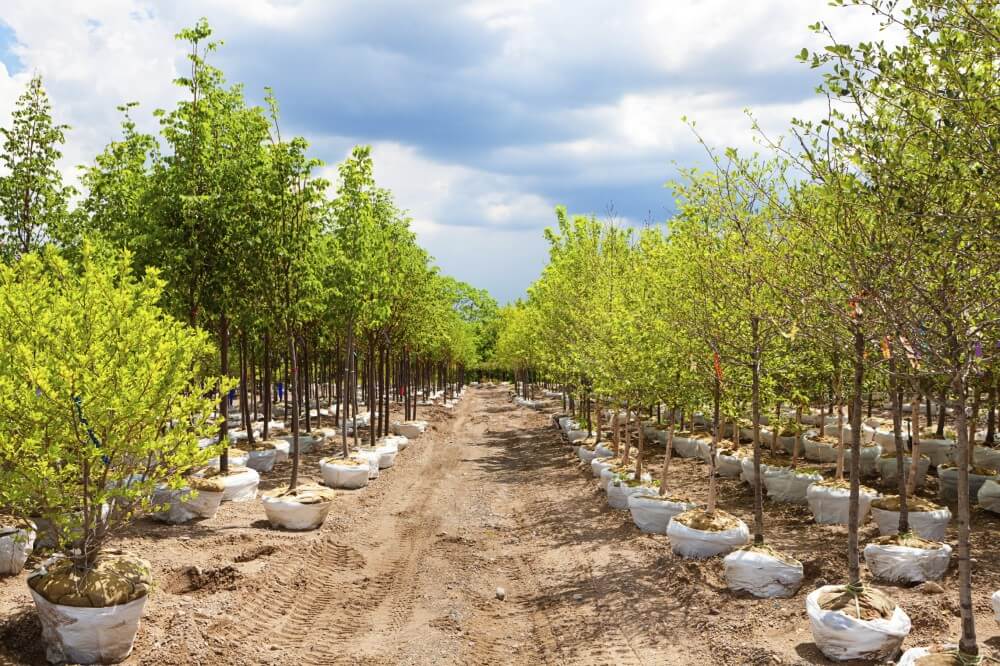One of the most commonly asked questions of our arborists is “What tree do you think I should plant?” There is no single answer for any situation, but we do have a few words of wisdom to offer….
Haste Makes Waste
When it comes to selecting trees, a decision in haste really can lead to a lifetime of regret. Many trees grow more beautiful generation after generation but others have the potential to create decades of trouble, dropping messy fruit or bothersome leaf litter. So, take your time and select trees that offer the best combination of qualities you will enjoy.
Form Follows Function
Begin your selection by asking: Why do I want a tree? For shade and cooling? For a windbreak? To attract and shelter wildlife? For beautiful flowers, leaves, bark or fruit? To block the view of the neighbor’s less-than-lovely backyard, or to screen your house from the road, or the driveway from the house? The purpose the tree will eventually serve helps determine the form to select. A tree’s growth rate also may have a bearing on your choice. The slower growers are hardwoods and tend to live longer. If it’s important to establish shade or have flowers relatively quickly, choose a fast-growing tree. They are typically small, have soft wood and don’t live as long.
A Place for Everything, and Everything in its Place
In general, smaller trees should be placed near the house and the taller ones farther out in the yard or at its edge. Scale the selected trees to their surroundings by using small or medium-sized varieties form smaller houses and yards. And always consider mature tree size when evaluating a planting size. Deciduous trees lose their leaves in the fall and are bare all winter though the leaves often give a final show of beautiful color before dropping. They are wonderful planted on the south and west sides of houses to provide cooling in the summer and yet allow warmth and light in the winter. Evergreen trees retain their foliage year round for winter interest in the landscape and are excellent windbreaks on the northern side of buildings.
Take the Bitter with the Sweet, or Every Cloud has a Silver Lining
Every species of cultivated tree has assets that suit it for a particular landscape use. Each also has certain requirements critical to its survival in the yard, including cold hardiness, disease resistance, drainage conditions and exposure. Many do best in rich, moist, woodsy acidic soil. Others prefer more alkaline soil that tends to be dry because it’s not as rich in moisture-holding organic matter. Some trees, such as Red maple can even tolerate periodically soggy soil.
Trees also have their liabilities. Some have thorns that make them unsuitable for home with children or pets. Others are invasive; some are messy; some need a lot of maintenance; some are inherently hazardous over time. However, if you choose the right place for some of these less-desirable varieties, you often overlook their foibles and enjoy their virtues.
Knowledge is Power and There are Plenty of Fish in the Sea
Always choose disease resistant varieties of trees appropriate to our growing zone(s). The hardiness zone in your region can vary from 4a to 6a, know your zone! Visit http://planthardiness.ars.usda.gov/PHZMWeb/ for an interactive map.
Many local nurseries and garden centers can recommend varieties of trees and shrubs that are disease resistant and able to cope with our harsh winters. Another resource is the website maintained by the USDA Forest Service Northeast Region in cooperation with Rutgers University and University of Florida. The interactive Tree Selector program is designed to match specific tree species to particular sites based on a multitude of compatible characteristics. http://orb.at.ufl.edu/TREES/index.html. List of trees generated by the Tree Selector should be viewed as a guide, not as the final authority in a tree search. Also check out www.treesaregood.org and http://tcia.org/resources/consumer-resources. Both sites provide all kinds of consumer information on trees.
Last But Not Least
Chippers ISA Certified Arborists are always available to help you put the “right tree in the right place.”


